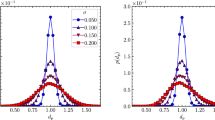The problem of expansion of a dilute granular gas consisting of smooth, inelastic hard spheres into vacuum was investigated by three different methods: both (1) analytical and (2) computational (CFD) treatments of a hydrodynamic model, and (3) by Discrete Element Method (DEM) simulation. Furthermore, the systems were followed for long times, over which the granular kinetic energy decreases by several hundredfold. The hydrodynamic model assumes that the particles are uniformly distributed in space, yet, in the DEM simulations, the particles are free to cluster. Thus the comparison allows us to evaluate the effects of cluster formation on the system. All three methods give quantitatively similar results for the escape momentum, energy evolution, and for the hydrodynamic velocity distribution, even for restitution coefficients as small as e=0.8. The maximum deviation between the escape momentum computed from the hydrodynamic model and from DEM is shown to be no more than 4%. This means that cluster formation exerts only a relatively minor effect on the hydrodynamic quantities, suggesting to us that the hydrodynamic model in combination with the CFD algorithm may provide an efficient tool in other related problems. In addition, it is one of few cases where hydrodynamic theory and DEM agree quantitatively.
Similar content being viewed by others
Author information
Authors and Affiliations
Additional information
Received: 17 June 2002
Rights and permissions
About this article
Cite this article
Goldshtein, A., Kamenetsky, V., Potapov, A. et al. Hydrodynamics of rapid granular flow of inelastic particles into vacuum. GM 4, 115–127 (2002). https://doi.org/10.1007/s10035-002-0111-9
Issue Date:
DOI: https://doi.org/10.1007/s10035-002-0111-9




